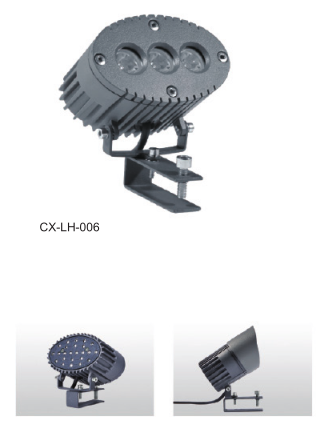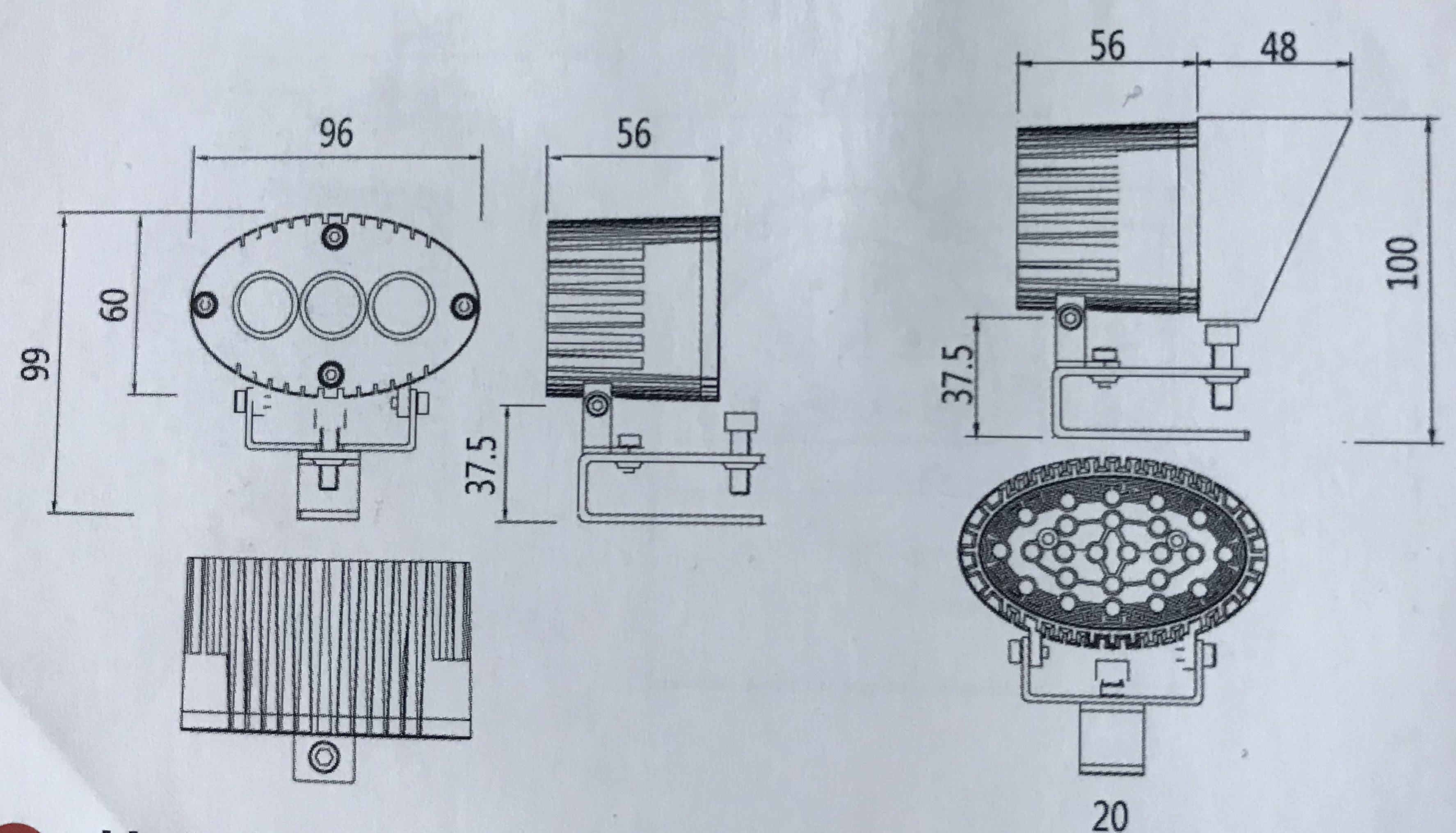Infrared detector principle and classification
The infrared light band emitted by different kinds of objects has its specific band, and the infrared light in this band is outside the visible light band. Therefore, people can use this specific band of infrared light to detect and track objects. The technology that detects invisible infrared radiation and converts it into a measurable signal is infrared detection technology. From the current application situation, infrared detection has the following advantages: environmental adaptability is better than visible light, especially the ability to work at night and in bad weather; it has good concealment and generally passively receives the target's signal, which is better than radar And laser detection are safe and confidential, and are not easily disturbed; because of the infrared radiation characteristics formed by the temperature difference and emissivity difference between the target and the background, the ability to identify camouflaged targets is better than visible light; compared with radar systems The infrared system is small in size, light in weight, and low in power consumption; the spectral response of the detector extends from short wave to long wave; the detector develops from unit to multiple, from multiple to focal plane; a wide variety of detectors and systems are developed The development from single-band detection to multi-band detection; from cooled detectors to room temperature detectors; due to its unique advantages, infrared detection technology has been widely researched and applied in the field of military defense and civil, especially in Driven by the traction of military demand and the development of related technologies, infrared detection technology as a high-tech in the future The application will be more extensive and the status will be more important. Infrared detectors are energy converters that convert invisible infrared radiation energy into other forms of energy that are easily measured. As the core key component of the infrared system, infrared detector research has always been the center of infrared physics and technology development. Since Herschel's discovery of infrared in the solar spectrum in 1800, the black-coated mercury thermometer was the earliest infrared detector. With the development of infrared experiments and theories, new devices have emerged. The preparation of infrared detectors involves multiple disciplines such as physics, materials, chemistry, machinery, microelectronics, and computers, and is a comprehensive science.
1.2.1 Thermal detector After the infrared detector absorbs infrared radiation, the temperature rise can cause the detection material to generate temperature difference electromotive force, resistivity change, spontaneous polarization strength change, or gas volume and pressure change, etc. to measure these physical properties The energy or power of the absorbed infrared radiation can be determined. Various heat detectors can be made by using the above different properties:
(1) Liquid mercury thermometer and pneumatic Golay cell: use the thermal expansion and contraction effect of the material.
(2) Thermocouple and thermopile: The use of temperature gradient can make the thermoelectric effect of thermoelectric force between different materials.
(3) Uncooled infrared imaging array of quartz resonator: the principle of resonance frequency is sensitive to temperature to realize infrared detection.
(4) bolometer: the use of the thermal effect of the material's resistance or dielectric constant—radiation causes a temperature rise to change the material's resistance—to detect thermal radiation. Because semiconductor resistors have a high temperature coefficient, they are most commonly used. Temperature bolometers are often called "thermistors". In addition, due to the emergence of high-temperature superconducting materials, the use of superconducting detectors with a sudden change in resistance around the transition temperature has attracted attention. If room temperature superconductivity becomes a reality, it will be the most striking type of detector in the 21st century;
(5) Pyroelectric detectors: some crystals, such as triglyphyl sulfate and barium strontium niobate, etc., when exposed to infrared radiation, the temperature increases, causing spontaneous polarization intensity changes, the result is perpendicular to the direction of spontaneous polarization A tiny voltage is generated between the two outer surfaces of the crystal, which can measure the power of infrared radiation.
1.2.2 Photon detector After the photon detector absorbs the photon, the electronic state changes itself, which causes photon effects such as internal photoelectric effect and external photoelectric effect. The number of photons absorbed can be determined from the size of the photon effect.
(1) Photoconductive detector: also called photoresistor. After the semiconductor absorbs photons with sufficient energy, some carriers in the body change from the bound state to the free state, thereby increasing the semiconductor conductivity. This phenomenon is called the photoconductivity effect. Photoconductive detectors made by the photoconductive effect are divided into polycrystalline thin film type and single crystal type.
(2) Photovoltaic detector: It mainly uses the photovoltaic effect of pn junction. Infrared photons with energies greater than the width of the forbidden band excite electron-hole pairs in and around the junction region. The existing junction electric field causes holes to enter the p region and electrons to enter the n region. There is a potential difference between the two parts, and the external circuit has a voltage or current signal. Compared with photoconductive detectors, the background detection rate of photovoltaic detectors is 40% greater, without the need for external bias electric field and load resistance, no power consumption, and high impedance.
(3) Light emission-Schottky barrier detector: metal and semiconductor contact to form a Schottky barrier, infrared photons are absorbed by PtSi through the Si layer, so that the energy obtained by the electron jumps to the Fermi level, leaving holes to cross the barrier Entering the Si substrate, the electrons of the PtSi layer are collected to complete infrared detection.
(4) Quantum Well Detector (QWIP): Two semiconductor materials are artificially grown in thin layers to form a superlattice, and there is a sudden change in the energy band at its interface, so that electrons and holes are confined in a low potential well Energy quantization forms a quantum well. Infrared detectors can be made using the principle of energy transitions in quantum wells. Because only the polarization vector perpendicular to the growth surface of the superlattice acts in the incident radiation, the photon utilization rate is low; the ground state electron concentration in the quantum well is limited by doping, the quantum efficiency is not high; the response spectrum region is narrow;
Led Tile Slots Lamp is commonly used in ancient architectural lighting, one light and one light, and the other side is the function of light casting.In addition, the luminaires can be equipped with a glare shield.The new energy-saving lamps with high power LED as the light source adopt optical grade PMMA high efficiency lens with low light loss and good illumination.The unique switching constant current source technology ensures that every LED works stably.It has good light transmittance, dust prevention and waterproof performance. The outer shell is made of aluminum alloy die casting parts for superconducting heat dissipation.Especially suitable for landscape architecture, ancient buildings, glazed tiles, villas, parks and other landscape decoration.The protection grade is up to IP65, which can adapt to various indoor and outdoor temperature and humidity environments.The color has the effect of red/yellow/blue/green/white/color change/full color etc.

Product size

Led Tile Slots Lamp,Led Project Lamp,Led Night Lamp,Led Mood Lamp
Jiangsu chengxu Electric Group Co., Ltd , https://www.satislighting.com
